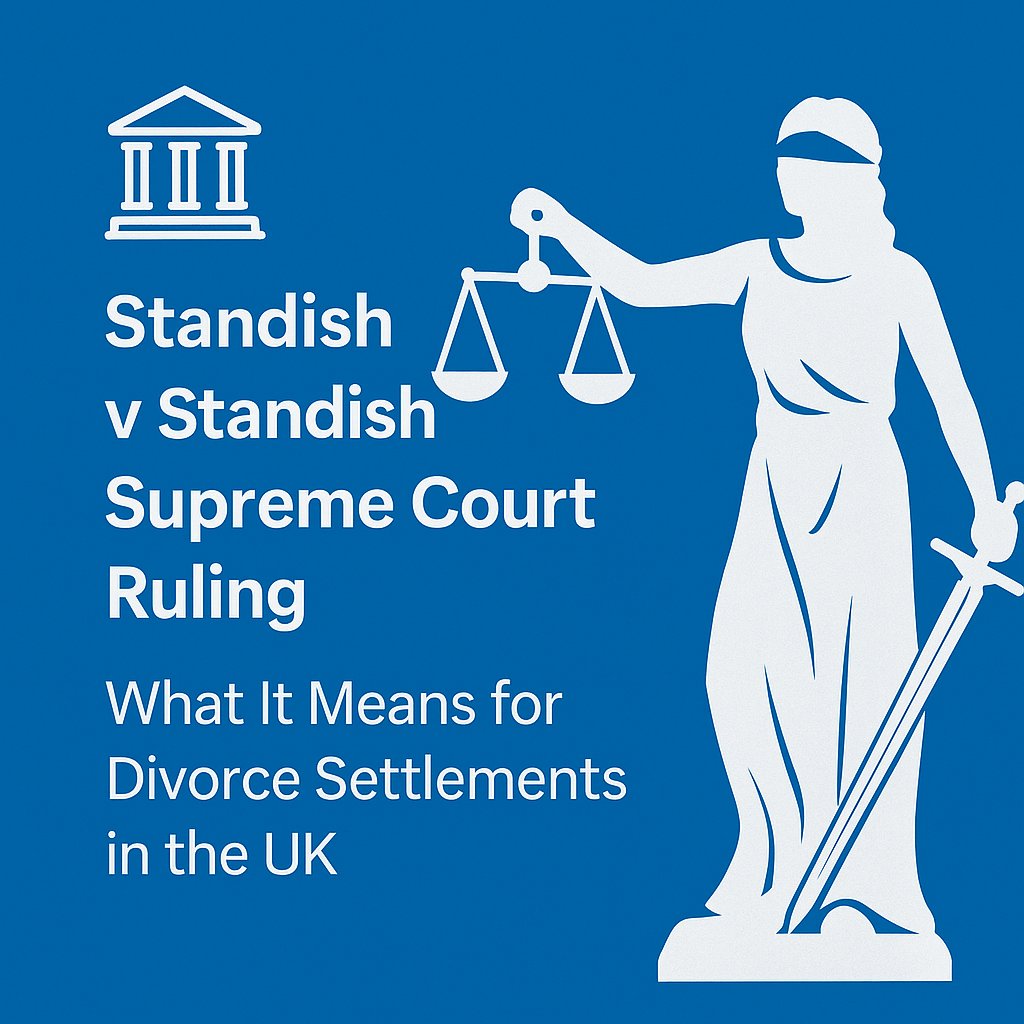OLS Solicitors Blog
Protecting Pre-Marital Wealth in Divorce: What the Standish Ruling Means for You

Standish v Standish Supreme Court Ruling: What It Means for Divorce Settlements in the UK
On 2 July 2025, the UK Supreme Court handed down its final decision in Standish v Standish—a case that has become the definitive guide for dividing assets in a divorce involving pre-marital wealth and large transfers between spouses.
If you or your partner brought significant assets into the marriage, this case will shape how the courts assess what is included in your divorce financial settlement.
What was the case about?
Clive and Anna Standish married in 2005. Clive, a wealthy financier, brought substantial pre-marital assets into the marriage.
In 2017, he transferred £80 million to Anna as part of a tax planning exercise intended to benefit their children. The planned trust was never created, and the marriage later broke down.
Anna argued that the money should be treated as matrimonial property and split. Clive claimed it remained his non-matrimonial wealth.
What did the Supreme Court decide?
The Supreme Court unanimously ruled in Clive’s favour. The Court confirmed:
- The source of the asset is the key factor: because the money came from pre-marital wealth, it retained its non-matrimonial status.
- The transfer was made for tax and estate planning, not to share ownership.
- Just because an asset is transferred or legally owned by the other spouse does not automatically make it part of the marital pot.
As a result, only £25 million of the £80 million was included in the divorce settlement. The remaining £55 million was ring-fenced as non-matrimonial.
What does this mean for divorce law?
This ruling now sets a binding precedent in England and Wales for dividing finances after divorce.
Key takeaways:
- Pre-marital assets are not automatically split in a divorce.
- The sharing principle only applies to matrimonial property.
- Transferring money into a spouse’s name doesn’t turn it into shared wealth unless there’s clear intent to do so.
- The intention behind the transfer matters—not just the ownership on paper.
What counts as non-matrimonial property?
Examples include:
- Wealth acquired before the marriage
- Inheritance received during the marriage, if kept separate
- Business assets or property owned before the relationship
- Large sums transferred for tax, estate planning, or children’s benefit
Unless there’s evidence these were intended for joint use, the court may exclude them from the divorce settlement.
Will every divorce follow this ruling?
Yes—this is now Supreme Court precedent. All courts must apply the same principles when deciding whether an asset is matrimonial or non-matrimonial. This is especially relevant in high-net-worth divorces or where one party contributed significantly more financially.
Going through divorce with complex finances?
If you’re dealing with:
- Significant pre-marital wealth
- Inherited money or property
- Tax or estate planning arrangements
- Or you’re concerned about protecting your business or future investments…
You need expert advice.
At OLS Solicitors, we help clients protect what matters most in divorce. We can advise you on how to structure your settlement and secure a clean break—whether you’re the wealth creator or the financially dependent spouse.
📞 Contact OLS Solicitors Today
- OLS Solicitors
- ☎️ 01554 756952
- 📧 [email protected]
- 🌐 www.ols-solicitors.co.uk
This article is for general guidance only and does not constitute legal advice. For tailored support, please contact our family law team directly.

